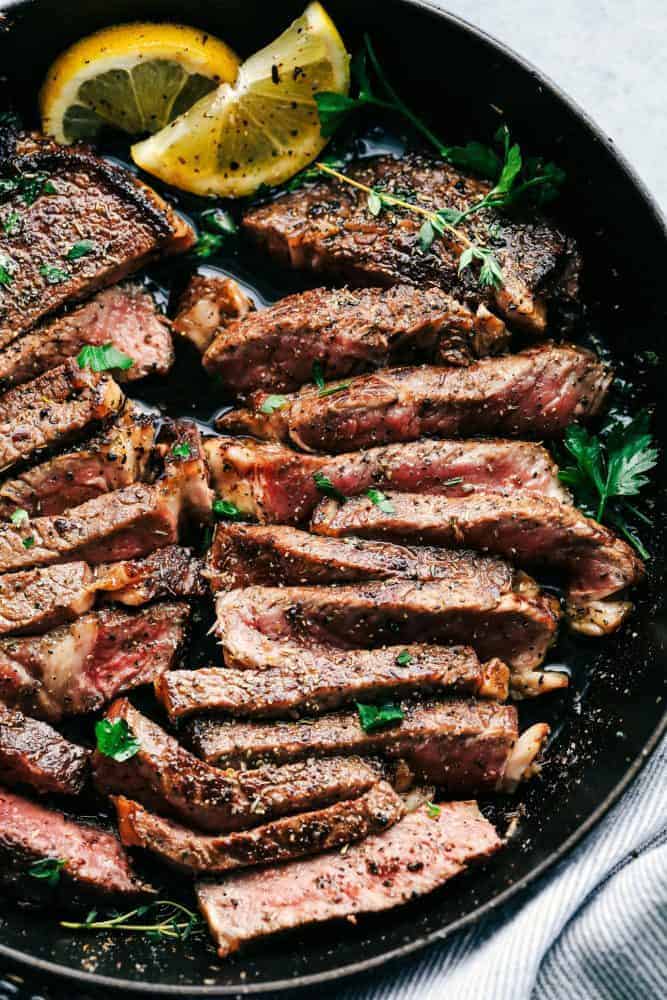Just How to Select High Quality Meat for Every Sort Of Recipe You Cook
Just How to Select High Quality Meat for Every Sort Of Recipe You Cook
Blog Article
From Ranch to Table: Fresh and Costs Meat Choices
The journey of meat from ranch to table envelops a complicated interplay of quality, values, and sustainability. With an increasing emphasis on fresh and premium choices, consumers are now much more likely to take into consideration the beginnings of their food, leading to a renewed concentrate on sustainable farming practices and pet welfare standards. This change not only enhances the dietary profile of meat but likewise sustains regional economic climates. However, the ramifications of these options expand much beyond individual health and neighborhood farming. What does this mean for the future of food systems and consumer routines?
Recognizing Meat Sourcing
As consumers become progressively knowledgeable about the origins of their food, comprehending meat sourcing has actually acquired extremely important significance. Meat sourcing entails tracing the trip of meat from ranch to table, encompassing various aspects such as farming practices, animal well-being, and environmental effect. This recognition empowers customers to make educated selections that line up with their values, especially concerning sustainability and honest considerations.
The sourcing of meat can differ considerably based upon numerous criteria, including the sort of animals, farming approaches, and geographical location. Grass-fed beef frequently comes from pasture-based systems that advertise animal well-being and lower environmental destruction. Alternatively, standard meat might involve intensive farming practices that raise issues relating to antibiotic usage and habitat devastation.
Moreover, traceability plays a vital role in meat sourcing. Knowing the specific farm or region where the meat comes from aids consumers guarantee quality and safety. Many consumers currently look for qualifications or labels that show humane treatment and sustainable practices, mirroring an expanding need for openness in the food supply chain. Inevitably, understanding meat sourcing not just boosts customer choice but additionally cultivates accountable intake and sustains moral farming methods.
Advantages of Fresh Meat
Picking fresh meat offers numerous advantages that expand beyond taste and structure. Fresh meat typically retains higher nutritional worth compared to its icy or processed equivalents. It is often richer in important vitamins and minerals, such as B vitamins, iron, and zinc, which are crucial for keeping total health and wellness.
Additionally, the sourcing of fresh meat usually includes much shorter supply chains, reducing the time between farm and table. This means that the meat is much less most likely to lose its nutritional integrity throughout transport and storage. Additionally, customers can experience enhanced taste and juiciness, which can boost culinary experiences.
Fresh meat also supplies an opportunity for customers to sustain regional farmers and advertise lasting agricultural methods. When buying from neighborhood resources, people can add to their regional economic climate and promote a greater link to the food they take in.
Lastly, fresh meat is typically devoid of the preservatives and additives typically found in refined alternatives. This makes it a cleaner, much healthier alternative for those looking to decrease their intake of fabricated components. On the blog whole, the advantages of choosing fresh meat include health and wellness, preference, and a feeling of community interaction.
Animal Well-being Requirements
Guaranteeing high animal welfare requirements is crucial for both moral factors to consider and the top quality of meat products. The treatment of animals directly influences not just the moral ramifications of meat manufacturing but likewise the overall quality and safety and security of the end products. Pets raised in gentle conditions are less stressed out, bring about healthier animals and, subsequently, exceptional meat top quality.
Rules and qualifications worrying pet welfare have ended up being significantly significant in the meat industry. These frameworks make sure pets are provided with sufficient area, proper nourishment, and humane handling throughout their lives. Practices such as pasture-raised systems and free-range atmospheres add to far better pet welfare by permitting animals to show natural behaviors, which is crucial for their health.
Moreover, consumers are ending up being extra critical concerning the sources of their meat, bring about an expanding demand for products that comply with rigorous pet well-being criteria. This shift not just promotes moral farming techniques yet likewise motivates producers to take check my source on steps that enhance the health and wellness and well-being of their pets. Meat. Ultimately, focusing on pet well-being is not just an ethical imperative; it is likewise a path to creating premium-quality meat that fulfills customer expectations

Sustainable Farming Practices
Lasting farming techniques play an essential function in improving both animal welfare and the quality of meat products. These practices emphasize the significance of environmental stewardship, honest therapy of livestock, and source performance. By implementing rotational grazing, farmers can advertise healthy and balanced pasture ecosystems, allowing pets to prey on nutrient-rich grasses while stopping overgrazing. This approach not just supports animal wellness but additionally improves the dirt, decreasing the need for artificial plant foods.
In addition, lasting farming commonly includes incorporated parasite management and natural feed choices, decreasing the usage of dangerous chemicals. This method not just safeguards animal well-being but additionally leads to cleaner, more secure meat products for consumers. Water preservation methods, such as rainwater harvesting and effective irrigation systems, better add to sustainable practices, ensuring that sources are used deliberately.
In addition, cultivating biodiversity with polyculture systems and protecting habitats for wild animals improves the durability of farming communities. By prioritizing these lasting techniques, farmers can generate top quality meat that meets customer need while promoting eco-friendly balance. Eventually, accepting lasting farming techniques is crucial for developing a much more accountable and resilient food system that benefits pets, farmers, and customers alike.
Picking Quality Over Amount
Regularly, customers are encountered with the dilemma of choosing between quantity and quality when it pertains to meat products. While purchasing bigger quantities may appear economically helpful, the lasting benefits of picking top quality meat far exceed the prompt cost savings. Quality meat is often sourced from animals elevated in lasting settings, where they are given correct nutrition and care, causing superior taste and dietary value.
Top quality meats are typically complimentary from harmful additives, hormones, and prescription antibiotics that are typically present in mass-produced choices (Meat). This not only ensures a much healthier eating experience however also supports moral farming practices that prioritize animal welfare. Furthermore, premium meats have a tendency to have a much better texture and look here taste, improving the general cooking experience
Buying top quality meat encourages consumers to value smaller parts, permitting a much more conscious approach to consuming. This change not only influences individual health and wellness positively yet also promotes lasting usage patterns that can benefit the environment. In final thought, focusing on quality over quantity when picking meat items promotes a more liable and health-conscious way of life, ultimately enriching both the dining experience and the planet.
Conclusion

Report this page